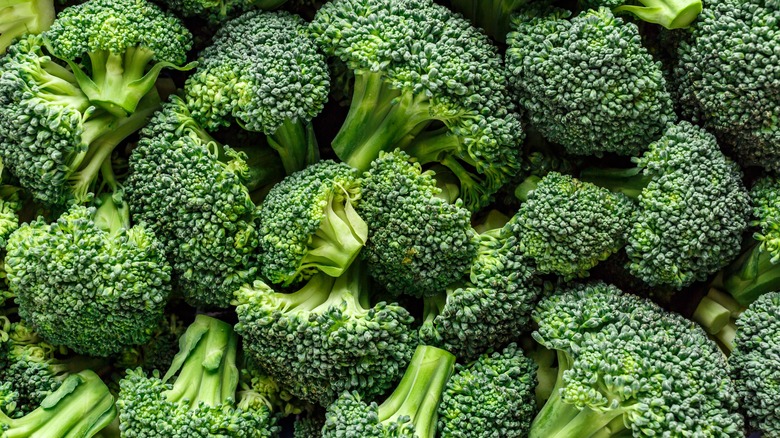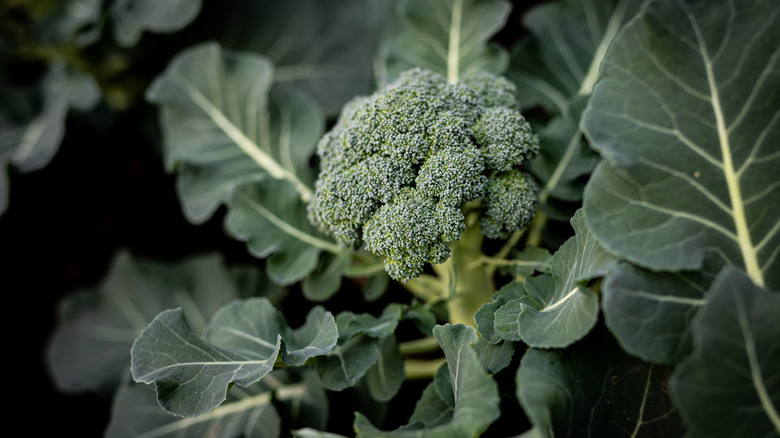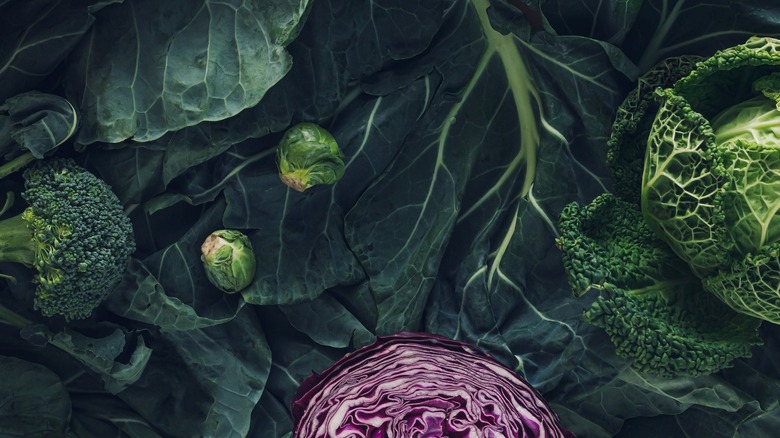How Broccoli Evolved Into A Human-Made Invention
Many fruit-and-vegetable-based diets purport to take us back to our early days as wild foragers, surviving on the gifts of nature alone, but the truth is far more complicated. In reality, most of the fruits and vegetables that factor into our modern diet did not simply pop up in the wild but were rather carefully crafted for human consumption through generations of selective breeding. These days, the very mention of genetically modified organisms sends some people spiraling into panic, but the truth is, this is how human beings have been eating since the very beginning of our species, and for proof, we need look no further than that most ubiquitous of veggies: broccoli.
Broccoli does not grow in the wild. It is a cultivar of a wild plant that bears very little resemblance to the vegetable we know today. But what is a cultivar? When farmers and botanists crossbreed different plants, the resulting offspring is known as a cultivar. This is how many of the plants in our world, and on our tables, came about, including watermelon, eggplant, and corn. Broccoli is a cultivar of Brassica oleracea, which folks may recognize by the name wild cabbage or wild mustard. How we got from that point all the way to steaming broccoli in the microwave is a long story, and there's a lot we still don't understand about this incredibly common food.
How early humans turned wild cabbage into broccoli
Wild cabbage is native to the Mediterranean region, and broccoli specifically came from the area of modern-day Italy. The ancient Etruscans, whose civilization occupied much of the Italian peninsula before the rise of the Roman Empire, were among the first to cultivate wild cabbage, valuing its immense nutritional benefits. The Etruscans were prolific traders and helped popularize the vegetable amongst other Mediterranean civilizations like the Greeks, Phoenicians, Sicilians, and Corsicans.
The first version of broccoli that modern diners would recognize was likely Calabrian broccoli, or broccolo Calabrese, which is the most common variety today. Thought to be the original type of broccoli, it emerged in Southern Italy, though it's not entirely clear how long the evolutionary process took, and whether other plants were crossbred with wild cabbage to get Calabrian broccoli. Pliny the Elder, who lived from AD 23 to 79, is thought to have written about broccoli farming. So it may have existed as a distinct vegetable by then, though it still might not have looked like modern broccoli.
It appears that the process of breeding broccoli from wild cabbage to its modern form took well over a thousand years. Though it seemed to gain popularity in the Roman Empire, broccoli might not have been known outside the Italian peninsula until the 1500s when it first appeared in French literature. It would take centuries longer to catch on in other parts of Europe and the world as a whole.
Wild cabbage gave birth to many other vegetables
Broccoli isn't the only popular vegetable that ancient farmers engineered from wild cabbage. In fact, Brassica oleracea is the common ancestor of every type of kale, cabbage, brussels sprouts, cauliflower, and a whole lot of other vegetables as well. How could so many different foods evolve from a plant that we don't even eat anymore? It's all in selective breeding.
Some people preferred the leaves of the wild cabbage, so they selectively bred only the plants that grew the biggest leaves. Over time, this led to vegetables with bigger and bigger leaves, finally reaching the kale and collard greens we have today. However, people who preferred the flowers of wild cabbage selectively bred plants with the largest flower structures, which is how we got broccoli and cauliflower. The name broccoli is derived from the Latin "brachium," which means "arm," referring to the branching stem structure it was bread to have.
Still other farmers came up with their own spins on wild cabbage. Some of them favored large leaf buds, so they bred plants with large heads of lightly-packed leaves. Those are what we now consider cabbage. Other people favored smaller leaf buds, so they bred the modern Brussels sprout. And the innovations haven't ceased. Broccolini was only invented in 1993 when a Japanese company crossbred broccoli with kai-lan, a long-stemmed cultivar of wild cabbage with wide leaves. At this rate, who knows what kind of broccoli future generations will be eating?


